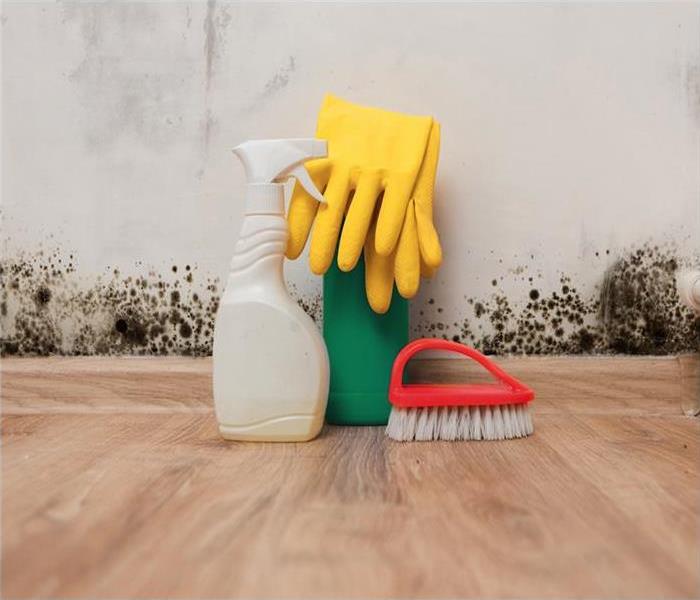Does Bleach Remove Mold from your Riverside home?
6/12/2019 (Permalink)
 For the best cleanup results and the lowest change of regrowth, contact a mold damage cleanup and remediation company.
For the best cleanup results and the lowest change of regrowth, contact a mold damage cleanup and remediation company.
Consistent exposure to mold has a very negative effect on your family and your home or Business.
The negative consequences of mold exposure can easily go undetected and cause serious problems.
A building owner or manager may want to know whether bleaching mold is an affordable and effective alternative to professional cleanup.
Even if only a small amount of mold can be seen, it is likely you have a bigger problem below the surface.
Take action to remove the problem permanently and safely. Here is what you need to know...
Bleach can kill virtually every species of indoor mold that it comes into contact with. However, using bleach only works if the mold is growing on non-porous materials like tile, tubs, and counter tops. That’s because bleach can’t penetrate porous materials such as wood and drywall. Using bleach on such materials can be deceiving because it will kill the mold above the surface, but mold below the surface will remain. Bleach can be useful but it can also cause damage; it's a harsh, corrosive chemical that gives off harsh fumes. There are safer alternatives.
Cannot Eliminate Hyphae
The multicellular filaments that form during mold growth often go deeper than the surface of a material. Disinfecting or sanitizing surfaces may not eliminate the presence of hyphae, or underlying root structures, and will not be effective for inhibiting future mold growth. If moisture levels remain high and food sources such as cellulose or dust are still available, mold that has been bleached may regrow on non-porous, semi-porous or porous surfaces.
May Damage Materials
A building owner or manager should consider the effects of cleaning solutions on any material supporting mold growth. Chlorine-based solutions may damage delicate materials. Oxygen-based formulas are gentler and safer, but are still not ideal for treating mold on most surfaces. Mold damage experts can recommend more effective fungicides to cleanup mold and inhibitors for prevention or will tear out and replace ruined materials.
Borax is a natural, white mineral powder that has a low toxicity and does not emit dangerous fumes. It can be mixed with water to kill and remove mold because it is a natural mold inhibitor.
Vinegar is a mild acid that can kill 82% of mold species. It’s also natural and safe. Vinegar is non-toxic and doesn't emit dangerous fumes.
Fungicides are more effective than bleach for stopping mold growth. Some treatments may require safety precautions. For the best fungus cleanup results and the lowest change of regrowth, building owners or managers should contact a mold damage cleanup and remediation company in Riverside, CA.
Removing mold can be serious business. When removing mold wear a respirator or face mask and cover your arms, legs and hands to avoid contact with mold spores. You should safely be able to take on bathroom mold or relatively small mold outbreaks in other areas if you take these precautions. For larger problems, especially problems where hidden mold may be a problem, it’s probably wise to call a reputable professional.
Every mold infestation is different, from the amount of mold to the types of materials affected. Each scenario requires a unique solution, but the general process stays the same. The steps listed below illustrate the process for a “typical” mold remediation infestation by a professional:
SERVPRO of West Riverside City is a trusted leader in the restoration industry. We provide 24-hour emergency service and are dedicated to responding faster to any size disaster. With the training and expertise to handle your restoration and cleaning needs, we’re locally owned and operated and can respond immediately to your emergency. Call us at 951-351-8033, we are here to help!






 24/7 Emergency Service
24/7 Emergency Service